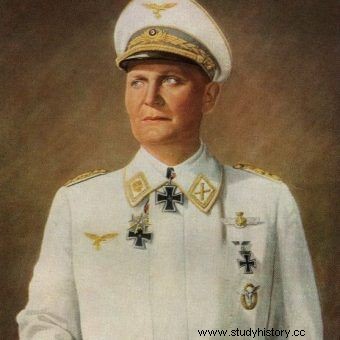
Portrait of Hermann Göring.
Hermann Goring
German politician, born in Bavaria. At 21, he enlisted in the army to take part in World War I. He started his military service as an infantry soldier, and later moved to aviation. In direct clashes, he knocked down 22 enemy machines. He was awarded the Order of Pour la Mérite for his services. In 1922 he joined the Nazi Party. During the beer coup, i.e. the Munich coup, he was wounded. Escaping arrest, he emigrated to Austria, and then to Sweden. After four years, he returned to Poland, where he became a representative of BMW. Thanks to the reputation of a war hero, he quickly gained a high position in the society of that time and began his political career. In 1928, after the elections, he became one of the twelve Nazi envoys of the Reichstag.
Hermann Goring was a man hungry for power, he quickly climbed the career ladder and came closer to Hitler. In 1933 he became the prime minister of Prussia. The first concentration camps were established that year at his request. On his initiative, the Gestapo was created, over which he transferred control to Himmler in 1934. From 1935 he commanded the Luftwaffe, he was also the head of the industrial conglomerate Hermann Göring Works. In 1939 Hitler appointed him his successor, and in 1940 gave him the title of marshal. He held many positions:he was the commander of the stormtroopers, the inspector of forests and the Reich hunter, the chairman of the state council, as well as the president of the Reich Protection Council and the Scientific Research Council.
At the end of World War II, on May 8, 1945, Hermann Goring turned himself over to American soldiers. He sat in the dock in the Nuremberg trial. He was the highest-ranking Nazi on trial by the International Military Tribunal. He was found guilty of crimes against humanity, crimes against peace and war crimes. He was sentenced to death, but the sentence was not carried out. On October 15, 1946, Hermann Goring committed suicide by chewing on a cyanide capsule.
